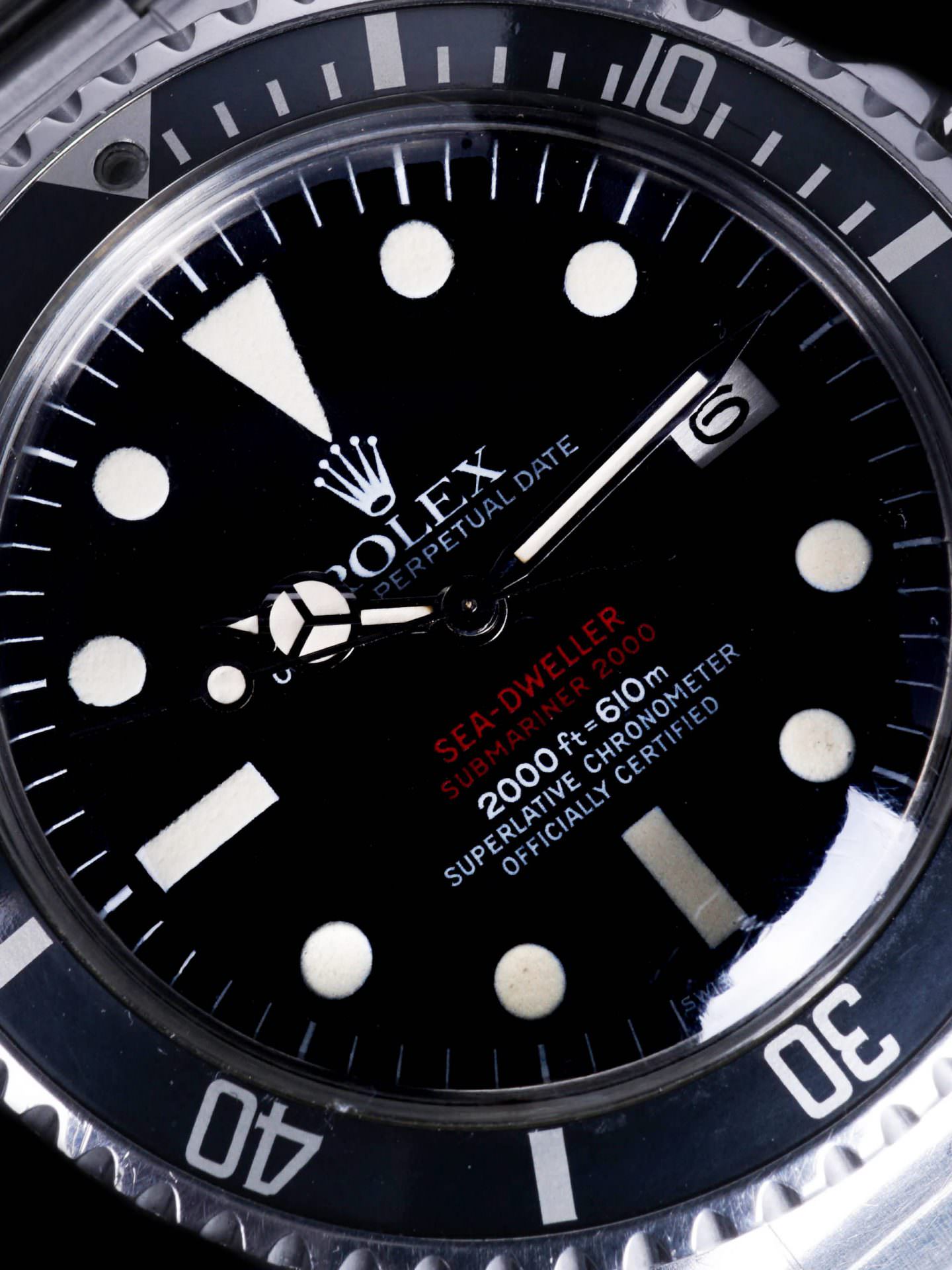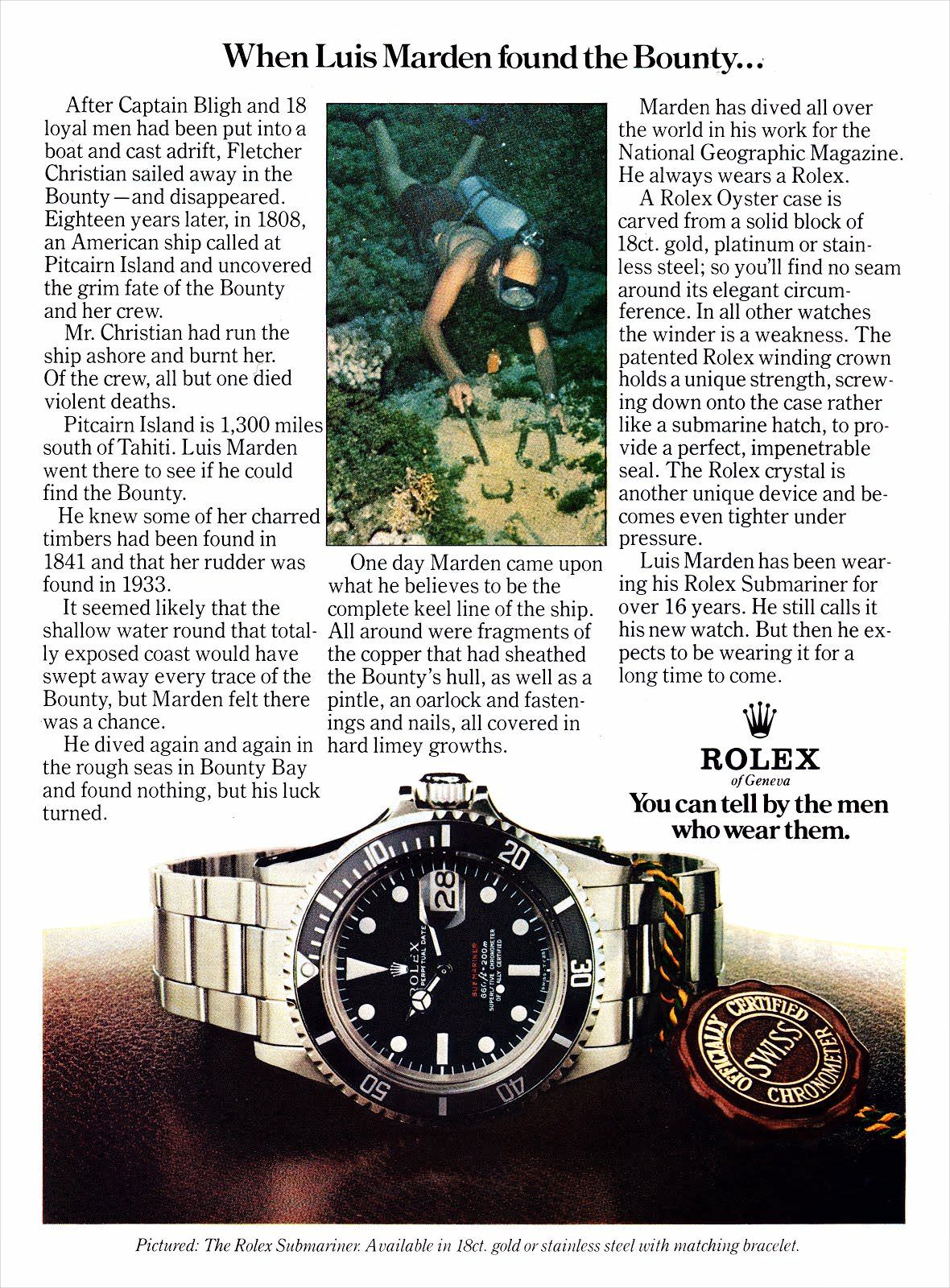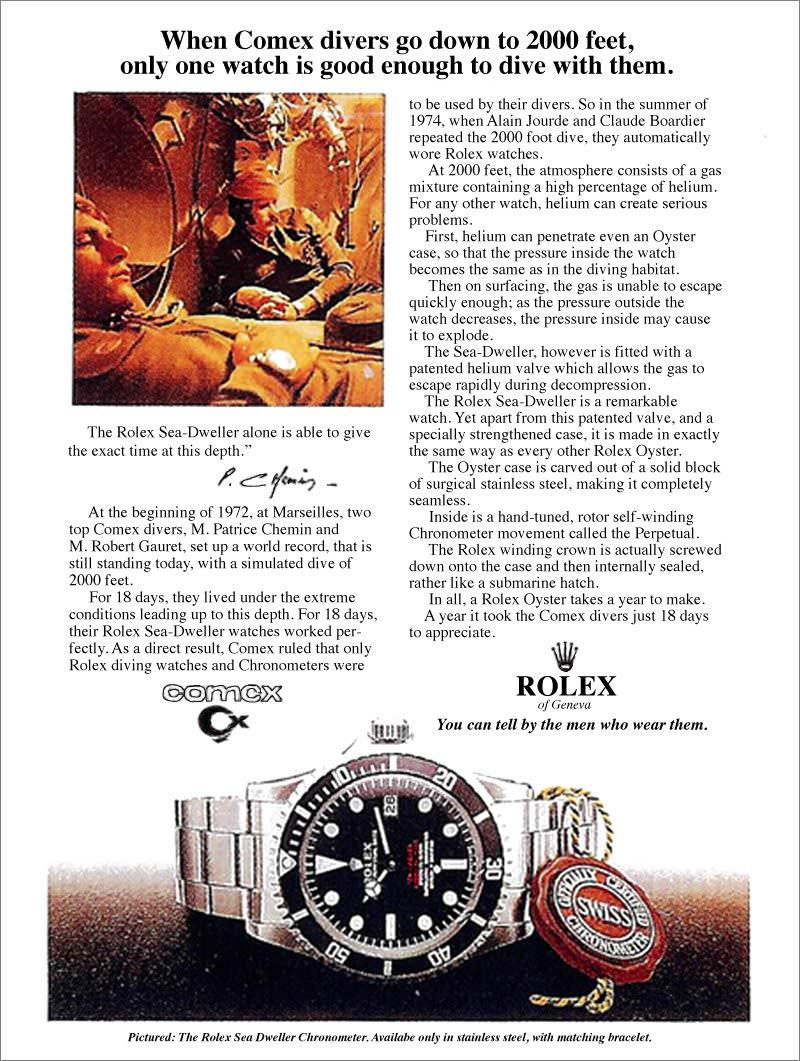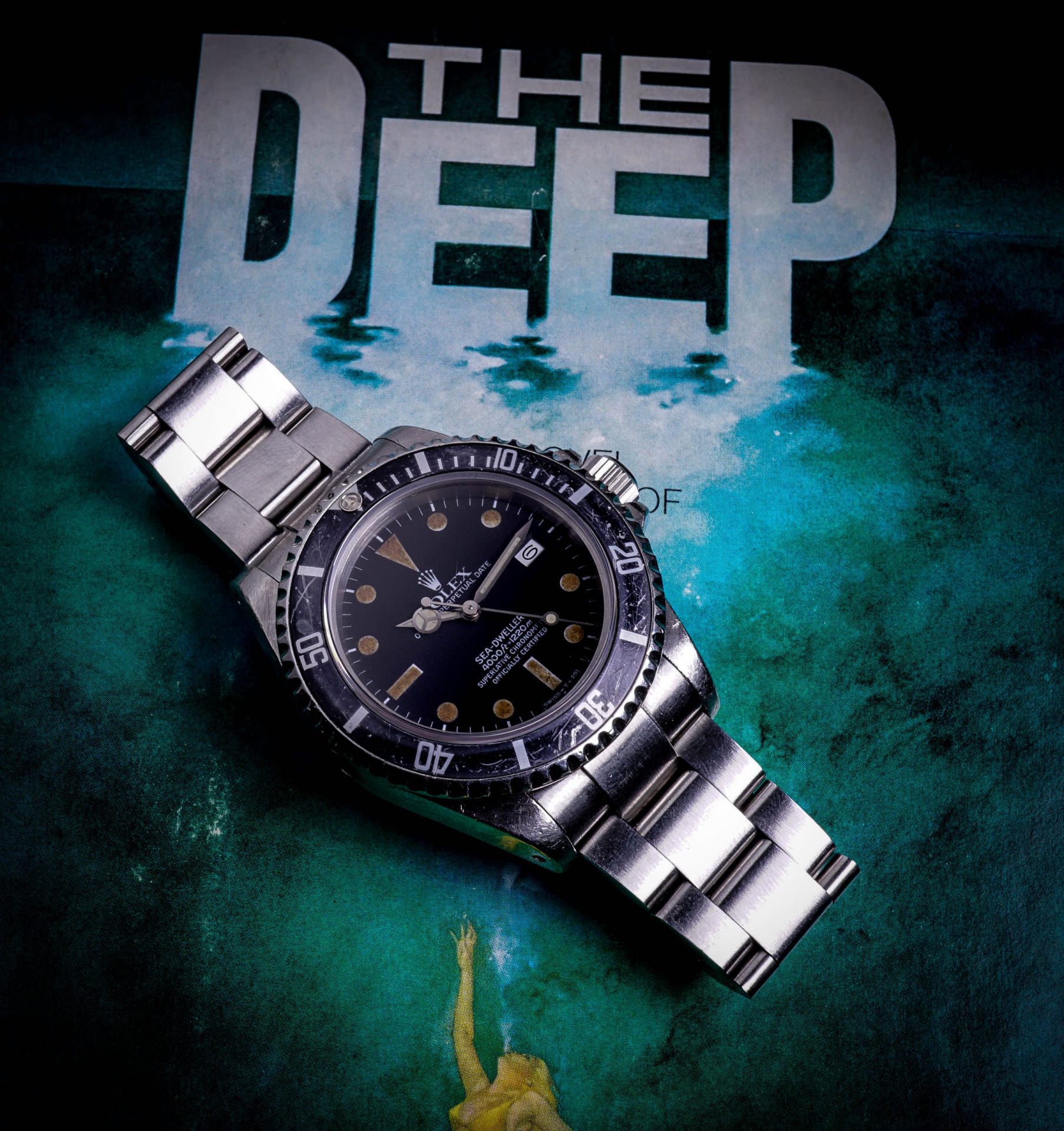Underwater exploration in the 1950s and 1960s was seen as a key scientific frontier, and to fully understand the Sea-Dweller it’s necessary to know just a little about SEALAB. It was thought that understanding the impact of living underwater for an extended period of time could have implications on not just the technical side of diving research, but give us a greater understanding of the effect of isolation and the physical and psychological strain it can put on human beings. SEALAB was borne out of the same desire to push the human experience to new limits that led us to the moon and the top of Everest.

SEALAB was, essentially, an artificial subaqueous habitat designed to be lived in for extended periods of time by scientific researchers and diving professionals. With commercial saturation diving applications on the rise in the 50s and 60s, it became necessary to study the effects of this unique type of diving that allowed divers to spend much more time in a pressurized environment to do their work. Instead of being limited by the amount of breathing gas you can bring with you on a dive, a saturation diver breathes a helium mix during and in between dives for weeks at a time. So, in the SEALAB experiments, divers would spend time doing their thing underwater, and return to the pressurized SEALAB living quarters, located off the coast of Bermuda at a modest depth of 59 meters. The idea is that if you keep the divers at the same pressure during the course of a longer commercial diving job, you cut back dramatically on the risk of decompression sickness.
During the famed SEALAB missions, divers found that during decompression their watch crystals would pop off of the case violently. Helium particles were looking for any way to escape the confines of the pressure sealed watch cases and found a weak point.
The Rolex solution? Build a small valve into the side of the case, allowing the helium to escape, while still keeping the watch waterproof. No more blown crystals, and a watch that was perfect for the incredibly small percentage of the already small slice of the population that needs a watch to function at great depth. And just for kicks, they were certified to go even deeper than a Submariner. Way deeper. Six hundred meters, three times the depth of the Submariner. They had the SEALAB market cornered.
Saturation diving is one of the most stressful and high skill jobs you can have. Like an astronaut of the sea, saturation divers experience extreme situations as a rule and must learn to deal with near-total isolation in a work environment where day and night bleed together. To work at depth for an extended period of time, divers live in small, self-contained quarters that they can enter and exit through an airlock to do their work. Days are long, punctuated with brief moments of highly intense work with life and death stakes.
Like all Rolex sports models, the Sea-Dweller has gone through only iterative changes throughout the years. Placing a modern Sea-Dweller next to a vintage reference from, let’s say, the 1970s, you’d be able to determine which model was newer, but the fifty-year-old version wouldn’t seem antiquated at all. All Sea-Dwellers are marked by a few key design indicators that have made them an essential piece of kit for dive professionals.

The previously mentioned helium escape valve isn’t a gimmick – it really did solve a problem experienced by some of the first long term underwater explorers. Today, the vast majority of Sea-Dweller owners will never need to use it (and it’s passive in design, so there’s nothing the wearer has to “do” to actuate it). But it signifies something about the watch and wearer just the same. From across the room, a Sea-Dweller and the much more common Submariner are basically twins. The small details that differentiate them aren’t perceptible until you’re much closer, or even until you have them in the hand. But once you get there, that escape valve tells the story of a timepiece that was built for a world, unlike the one we’re currently walking and talking in. Like all the best sports watches, there’s something aspirational about the Sea-Dweller that comes through in this small valve on the left-hand side of the case.



The other distinguishing characteristic of vintage Sea-Dwellers is the complete lack of the traditional Rolex “cyclops” magnifier over the date window at three o’clock. The cyclops has its proponents and detractors, but the reason for leaving it out of the design of the Sea-Dweller is a technical one. Rolex wasn’t confident that the watch could maintain its extreme resistance to pressure with the extra weight of the cyclops (before sapphire crystals, the magnifier was simply glued to the acrylic). The impact of this design on a vintage Sea-Dweller is to create a more spartan look. It’s profoundly unusual to look at a Rolex dial with a date and not see the cyclops.
Throughout the Sea-Dweller’s history, the mechanical movements used to power it lined up pretty much exactly with whatever was ticking away inside the Submariner of the moment. Most notably, early Sea-Dwellers were powered by caliber 1575, which made its debut in 1966 inside the reference 1680 Submariner (the quite famous “Red” Sub). Caliber 3135, introduced in both models in the late 80s, has continued to be used in both Subs and Sea-Dwellers until the present day, with the Sea-Dweller line getting some very recent upgrades beginning in 2017 with the caliber 3235 (which effectively doubles the old movement’s power reserve – speculation that this movement or a derivative will be included in an updated Submariner is at a fever pitch).

There are a lot of watches in the Rolex catalog that you buy because you want people to notice your Rolex, but the Sea-Dweller swims against that current in a meaningful way. While it remains a large and noticeable dive watch, it’s far more of a niche item than the Submariner. For a lengthy period of time, it could be argued that it was the dog of the lineup, simply because it didn’t fit neatly into a predetermined mass-market bucket. But the fact that it’s such a specialty item, and for its entire history has remained a purpose-built tool, is what makes it, now, so collectible and desirable to people who’ve never worn a dry suit, let alone lived in a subaqueous chamber for days on end.

With the introduction of the newest version of the Sea-Dweller, a 43mm watch with plenty of high polished bling and some red text and a cyclops on the dial (and a price tag in the five figures), Rolex has moved their ultimate tool watch squarely into the luxury category. A two-tone version (a first for a Sea-Dweller) that debuted just months ago at Baselworld takes the watch a step further down this path. Both of these pieces have their charms of course. They are exceedingly well built modern Rolexes, after all. But they somehow make the simple, utilitarian Sea-Dwellers of old even more interesting. A Sea-Dweller that was produced in the 70s or 80s had a good chance of being used in high-risk commercial diving activities, something that can’t be said of the new SDs fresh from the factory, which have been allocated to Rolex’s best customers, on a years-long waiting list.
It’s increasingly difficult to find under the radar watches in a moment when the hobby of collecting is more popular than ever. There’s something extremely satisfying, then, about a vintage timepiece that looks like a Submariner to 95% of the population but isn’t. Like the Sea-Dweller itself, you have to go deeper to really understand it.

Check out 'Reference Tracks' our Spotify playlist. We’ll take you through what’s been spinning on the black circle at the C + T offices.

Never miss a watch. Get push notifications for new items and content as well as exclusive access to app only product launches.
Sign up for our newsletter to receive updates and exclusive offers